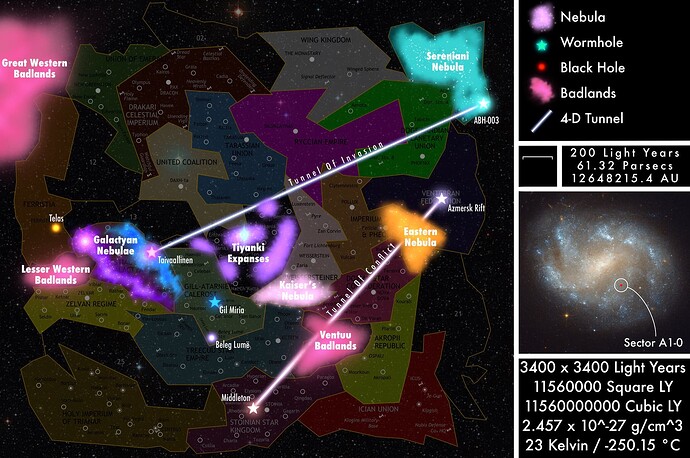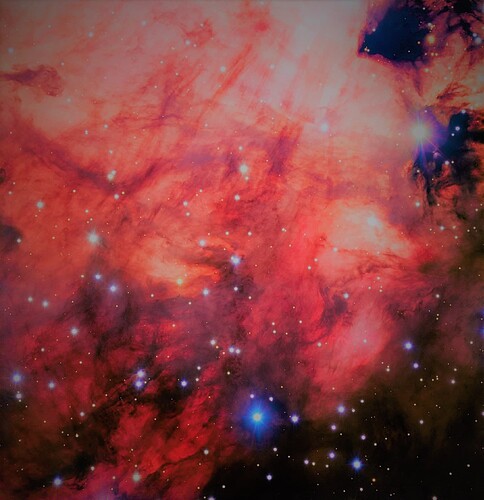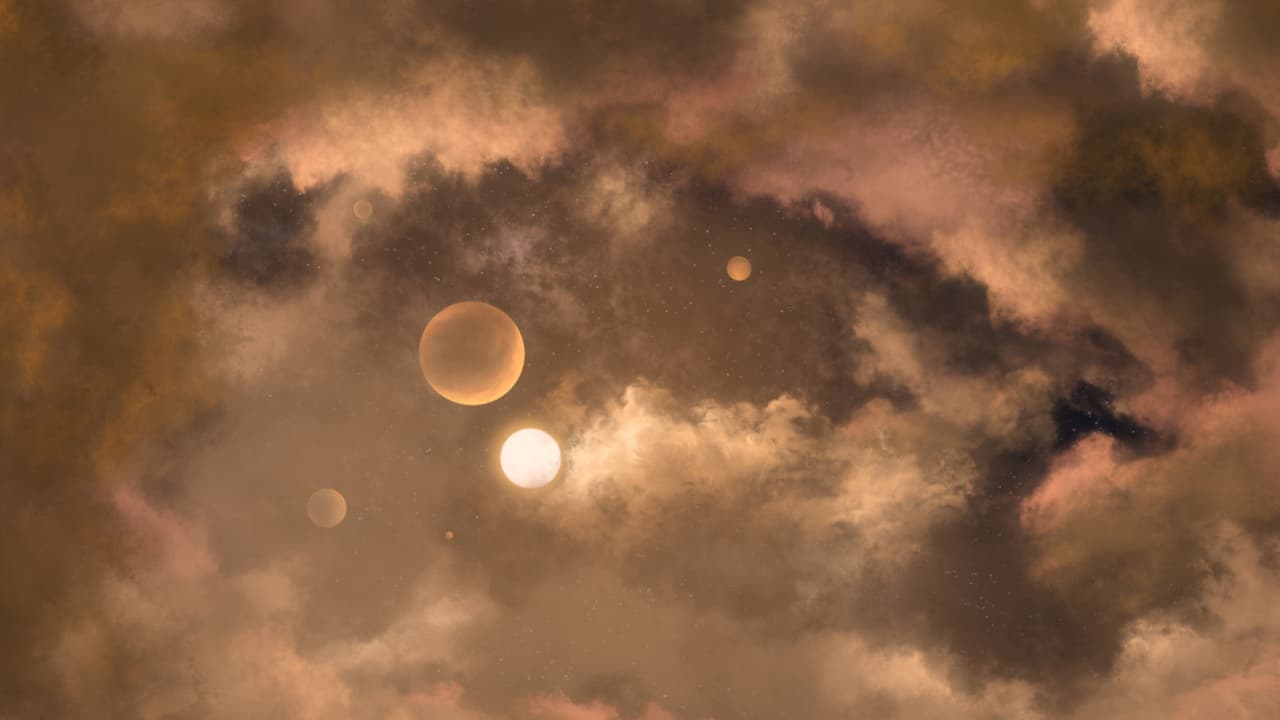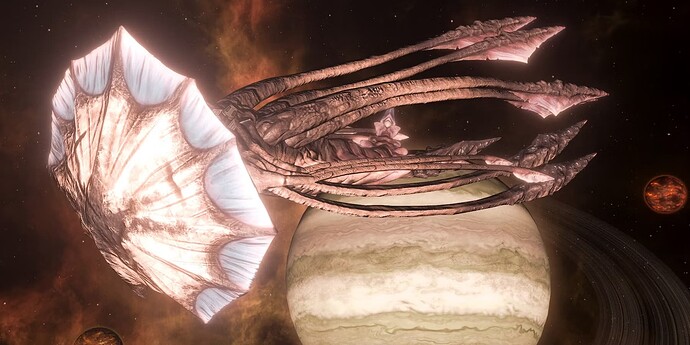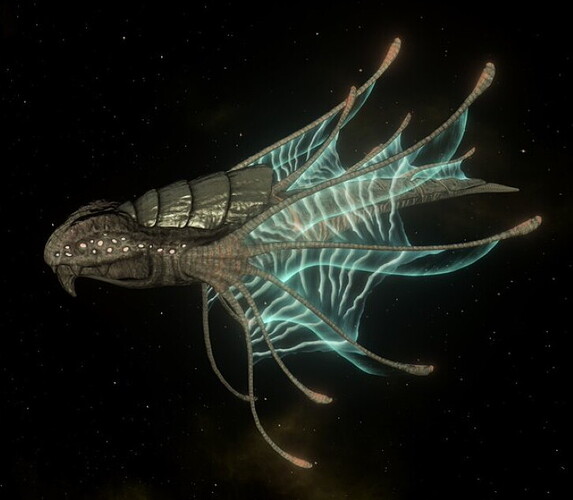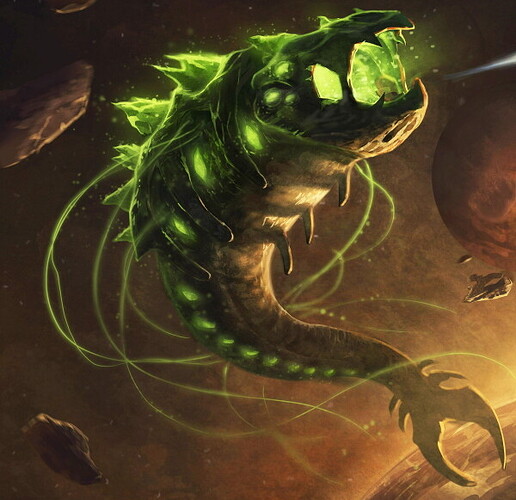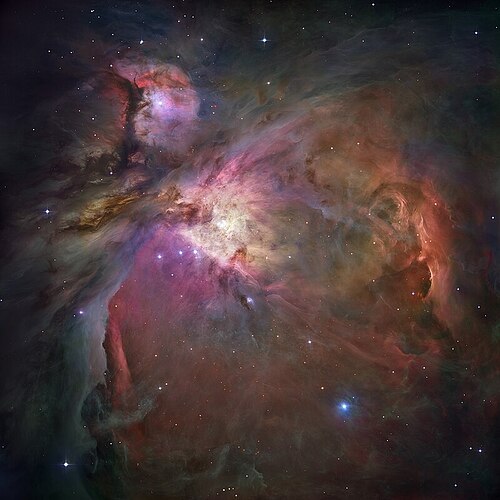Badlands
An image taken at the limits of the Ventuu Badlands.
- Dangerously Abnormal Density
- Abnormal Temperature
- Strong Spacial Anomalies
- Strong Temporal Anomalies
- Unknown Phenomena
- Ship Traversability Index: 0.1
- Travel Danger Level: 10/10
The Badlands are untraversable regions of space that litter the Alpha Quadrant of the Lampshade Galaxy, in which Sector A1-0 is located. The Badlands resemble large emission nebulae, and are characterized by their red-pinkish glow. However, their properties are far different and far more dangerous than the ones of any regular nebula. The Badlands are exceedingly dense, thousands of times denser than regular nebulae, and the unidentifiable gaseous material they are made of has weird gravitational behaviors, as it is only attracted from other matter, and not itself. Because of this, Badlands areas retain their shapes for millions and millions of years without gravitationally collapsing, only being slightly modified by strong stellar winds. Additionally, inside the Badlands are located incredibly dangerous space-time distortions, with ships that attempt to cross them often disappearing, being crushed, being cut in half, or being completely melted. Experiments have lead scientists to discover that the Badlands’ distortions in the flow of time are generally similar to the ones of a black hole’s ergosphere.
Therefore, travel inside of these regions is considered extremely dangerous and practically impossible. While there are rumors of vessels being able to find and cross the Badlands through safe areas and tunnel-like regions, they often come from unreliable sources, and have yet to be verified.
Tiyanki Expanses
Expanse clouds in the Great Expanse, the largest in the Tiyanki Territories.
- Very High Density
- Weak Space-Time Anomalies
- High Star Formation
- Presence of Spaceborne HyperFauna
- Ship Traversability Index: 0.54
- Travel Danger Level: 6/10
The Tiyanki Expanses are relatively large emission nebulae with an abnormally high density compared to regular nebulae found in the rest of the Lampshade Galaxy. The Expanses are characterized by large contents of dust and debris, as well as high amounts of hydrogen and helium gas. The high presence of these gases, especially in the Lucent Expanse, are the reason for the high levels of star formation registered throughout the Expanses. Regardless of the anomalous properties of the gases and dust, they still gravitationally interact normally with other matter, and often collapse to form new stars or form large structures known as Expanse Clouds. While they are often confused with the Badlands, they are far less dangerous, presenting far weaker space-time anomalies, that only cause interference with scanner and shields. Regardless of their far less dangerous nature, ships in Real Space, Warp Space, Hyper Space and Mirial Space FTL travel are still slowed down, with the anomalous Expanses’ dust affecting multiple dimensions. Because of this, it has become difficult for star farers to properly explore these Expanses, and the fluctuations prevent large scale claiming of space within these anomalies.
However, the Expanses are also characterized by Spaceborne HyperFauna, an exceedingly rare class of creatures, with size measured in the kilometers, that carry out almost all of their life cycle (except for birth and in some cases death) in the dense and luminous environment of the Expanses. Able to propel themselves using pressurized gases and titanic cell-like structures that use starlight or burn the Expanses’ dust and gases, the HyperFauna has become one of the biggest disruptions and in most cases threats to travelling ships.
The Tiyanki, also known as “Space Whales”, are the most common type of SpaceBorne HyperFauna in the Expanses. Reaching up to 16 km in length at their final stage in life, the Tiyanki travel throughout Sector A1-0 and return to the planet Tiyana Vrok to crash on it at the end of their lifecycle.
The Thrakno, known as “Space Drakes”, are another example of common HyperFauna. The membrane of their wings can come in two color variations: red variants are seen in the Great, Ch’Rattan and Trython Exspanses, while blue variants are found exclusively in the Enthralla Expanse. They reach a length of 8 km at their peak, though the blue variants are a little smaller.
The Oncor, known as “Space Basilisks”, are one of the rarest and most dangerous types of HyperFauna. These live exclusively in the Kelidon Expanse, can grow up to 12 km in length and are known for their invasive and aggressive nature. They aren’t afraid to attack ships and have to lay their eggs on planets, which is also where they live during their initial worm stage after hatching. Once they have grown sufficiently, they will depart from a planet’s surface and begin roaming the surrounding space.
Therefore, travel in the Tiyanki Expanses is still considered dangerous, but remains within the realm of possibility. Larger ships with good shielding and dispelling devices will encounter little to no difficulty when crossing the nebulous regions.
Sereniani Nebula
The Sereniani Nebula.
- Medium Density
- Very High Star Formation
- VERY Territorial Civilization
- Ship Traversability Index: 0.69
- Travel Danger Level: 4.5/10
The Sereniani Nebula is a large star birthing nebula in the north-eastern corner of the Sector. While it is naturally safer than the other nebulae-like areas in the Sector, due to it’s normal density and lack of any sort of anomaly, it’s star birthing rate is still very high, which, combined to the fact that the Nebula collapses fastly and spreads out in the surrounding space, has made the entire area highly uninhabitable, with only a few planets being fit for natural life.
Additionally, the Nebula is entirely occupied by a… very, territorial civilization, the Sereniani, who have been known in the past to shoot down vessels with clearly peaceful intentions just because they were crossing in their space.
Radiation levels are also very high in the Nebula when compared to the rest of the Sector, thanks to it’s titanic currents of ionized gases, dust and plasma. However, good insulation hulls and shielding won’t make this a problem for travelling ships.
